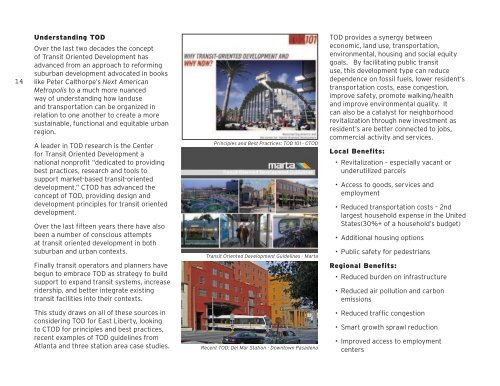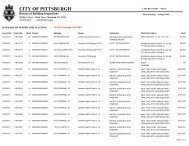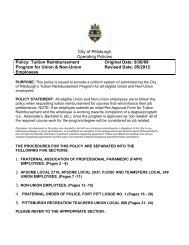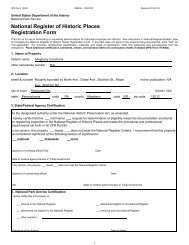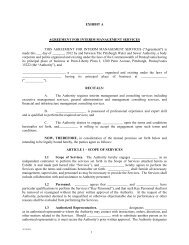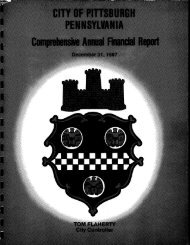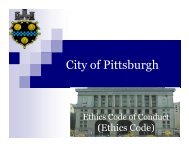east liberty station: realizing the potential - City of Pittsburgh
east liberty station: realizing the potential - City of Pittsburgh
east liberty station: realizing the potential - City of Pittsburgh
You also want an ePaper? Increase the reach of your titles
YUMPU automatically turns print PDFs into web optimized ePapers that Google loves.
14<br />
Understanding TOD<br />
Over <strong>the</strong> last two decades <strong>the</strong> concept<br />
<strong>of</strong> Transit Oriented Development has<br />
advanced from an approach to reforming<br />
suburban development advocated in books<br />
like Peter Calthorpe’s Next American<br />
Metropolis to a much more nuanced<br />
way <strong>of</strong> understanding how landuse<br />
and transportation can be organized in<br />
relation to one ano<strong>the</strong>r to create a more<br />
sustainable, functional and equitable urban<br />
region.<br />
A leader in TOD research is <strong>the</strong> Center<br />
for Transit Oriented Development a<br />
national nonpr<strong>of</strong>it “dedicated to providing<br />
best practices, research and tools to<br />
support market-based transit-oriented<br />
development.” CTOD has advanced <strong>the</strong><br />
concept <strong>of</strong> TOD, providing design and<br />
development principles for transit oriented<br />
development.<br />
Over <strong>the</strong> last fifteen years <strong>the</strong>re have also<br />
been a number <strong>of</strong> conscious attempts<br />
at transit oriented development in both<br />
suburban and urban contexts.<br />
Finally transit operators and planners have<br />
begun to embrace TOD as strategy to build<br />
support to expand transit systems, increase<br />
ridership, and better integrate existing<br />
transit facilities into <strong>the</strong>ir contexts.<br />
Principles and Best Practices: TOD 101 - CTOD<br />
Transit Oriented Development Guidelines - Marta<br />
TOD provides a synergy between<br />
economic, land use, transportation,<br />
environmental, housing and social equity<br />
goals. By facilitating public transit<br />
use, this development type can reduce<br />
dependence on fossil fuels, lower resident’s<br />
transportation costs, ease congestion,<br />
improve safety, promote walking/health<br />
and improve environmental quality. It<br />
can also be a catalyst for neighborhood<br />
revitalization through new investment as<br />
resident’s are better connected to jobs,<br />
commercial activity and services.<br />
Local Benefits:<br />
• Revitalization – especially vacant or<br />
underutilized parcels<br />
• Access to goods, services and<br />
employment<br />
• Reduced transportation costs – 2nd<br />
largest household expense in <strong>the</strong> United<br />
States(30%+ <strong>of</strong> a household’s budget)<br />
• Additional housing options<br />
• Public safety for pedestrians<br />
Regional Benefits:<br />
• Reduced burden on infrastructure<br />
• Reduced air pollution and carbon<br />
emissions<br />
This study draws on all <strong>of</strong> <strong>the</strong>se sources in<br />
considering TOD for East Liberty, looking<br />
to CTOD for principles and best practices,<br />
recent examples <strong>of</strong> TOD guidelines from<br />
Atlanta and three <strong>station</strong> area case studies.<br />
Recent TOD: Del Mar Station - Downtown Pasadena<br />
• Reduced traffic congestion<br />
• Smart growth sprawl reduction<br />
• Improved access to employment<br />
centers<br />
East Liberty TRID Study | <strong>Pittsburgh</strong> Department <strong>of</strong> <strong>City</strong> Planning


